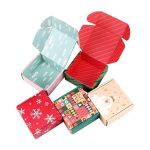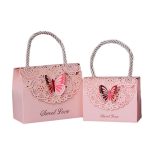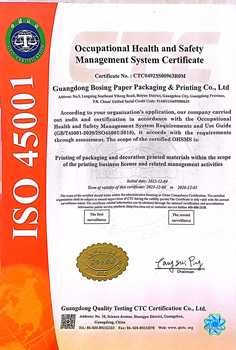In the modern business landscape, packaging has evolved far beyond being just a protective layer for products. Today, packaging boxes play a crucial role in branding, customer experience, and even environmental sustainability. Whether you’re in food and beverage, electronics, fashion, or cosmetics, choosing the right packaging box can make all the difference.
Why Packaging Boxes Matter
Packaging boxes are more than just containers—they are your brand’s first impression. Research shows that consumers often judge the quality of a product based on its packaging. A well-designed, durable, and visually appealing packaging box can enhance perceived value and influence purchasing decisions.
Branding and Marketing Benefits
-
Brand Recognition: Customized packaging boxes with your logo, color palette, and typography help reinforce brand identity. Consistent packaging creates trust and loyalty among consumers.
-
Marketing Tool: Packaging boxes act as a silent salesperson. Unique designs, high-quality finishes, and creative printing techniques can grab attention on crowded retail shelves.
-
Customer Experience: Unboxing experiences have become an important marketing strategy. Luxury and well-thought-out packaging can leave a lasting impression and encourage social media sharing.
Protection and Functionality
A good packaging box isn’t just about looks—it must protect the contents. Corrugated, cardboard, or paperboard boxes provide sturdy protection for shipping and storage. For fragile items such as electronics, glass bottles, or delicate food products, the right packaging box design ensures safety during transportation and reduces product returns.
Types of Packaging Boxes
Understanding different types of packaging boxes is crucial for businesses. Here are the most commonly used types:
1. Folding Cartons
Folding cartons are widely used in the food, beverage, and cosmetic industries. They are lightweight, easy to assemble, and cost-effective. Folding cartons are ideal for retail packaging, including cereal boxes, beverage cartons, and cosmetic boxes.
Benefits:
-
Lightweight and easy to transport
-
Customizable with offset printing, UV coating, or embossing
-
Eco-friendly options available
2. Corrugated Boxes
Corrugated boxes are strong and durable, making them perfect for shipping and logistics. They consist of multiple layers of paperboard, providing excellent protection.
Benefits:
-
Ideal for heavy-duty shipping
-
Can be customized with brand colors, logos, and graphics
-
Environmentally friendly, recyclable, and reusable
3. Rigid Boxes
Rigid boxes, also known as setup boxes, are commonly used for luxury products such as jewelry, electronics, and premium clothing. These boxes are sturdy, elegant, and often paired with soft inserts for product protection.
Benefits:
-
Creates a premium unboxing experience
-
Highly customizable in terms of design and finishing
-
Reusable and long-lasting
4. Kraft Boxes
Kraft boxes are made from kraft paper, which is strong, biodegradable, and eco-friendly. They are ideal for food packaging, gift boxes, and subscription boxes.
Benefits:
-
Eco-friendly and recyclable
-
Cost-effective and lightweight
-
Versatile for printing and decoration
5. Specialty Boxes
Specialty boxes include windowed boxes, magnetic closure boxes, and custom-shaped packaging. These are used for unique products that require distinctive presentation.
Benefits:
-
Enhance product visibility with windows
-
Add premium feel with magnetic closures or custom shapes
-
Perfect for marketing campaigns and gifting
Customization Options for Packaging Boxes
Customization is the key to creating packaging boxes that stand out. From materials to finishes, businesses have numerous options:
1. Printing Techniques
-
Offset Printing: Offers high-quality images and sharp text for detailed designs.
-
Silk Screen Printing: Suitable for bold colors and logos on paper or cardboard.
-
UV Printing: Adds glossy and vibrant effects for premium products.
-
Embossing/Debossing: Creates a tactile feel for logos or patterns.
-
Hot Stamping/Gold Foil: Adds a luxury metallic finish to packaging.
2. Materials
-
Paperboard: Lightweight and ideal for retail packaging.
-
Corrugated Board: Durable and perfect for shipping.
-
Kraft Paper: Eco-friendly, recyclable, and versatile.
-
Ivory Paper: Smooth, elegant surface for high-end boxes.
3. Shapes and Sizes
Packaging boxes can be made in any shape: rectangle, square, foldable, book-shaped, or custom die-cut designs. Size customization ensures a snug fit for the product, reducing damage during transit.
4. Surface Finishes
-
Glossy Lamination: Adds shine and luxury feel
-
Matte Lamination: Elegant, soft touch finish
-
Varnishing: Enhances durability and prints
-
UV Coating: Protects designs from scratches and fading
Sustainable Packaging Boxes
Environmental awareness is reshaping packaging trends. Businesses now prefer eco-friendly and recyclable materials to reduce carbon footprint.
Eco-Friendly Materials:
-
Recycled paper and cardboard
-
Biodegradable plastics
-
Plant-based inks
Using recyclable packaging boxes not only reduces environmental impact but also appeals to eco-conscious consumers.
Packaging Boxes for E-Commerce
With the rise of online shopping, packaging boxes have gained even more importance. E-commerce packaging must protect products, minimize shipping costs, and enhance brand experience.
Tips for E-commerce Packaging:
-
Use strong corrugated boxes for shipping
-
Add inserts or dividers for fragile items
-
Include branded tape or custom mailers for a professional touch
-
Design packaging for easy unboxing and social sharing
Trends in Packaging Box Design
-
Minimalistic Design: Clean, simple designs resonate with modern consumers.
-
Interactive Packaging: QR codes or augmented reality elements enhance customer engagement.
-
Luxury Unboxing: Magnetic closures, velvet inserts, and premium finishes for high-end products.
-
Sustainable Packaging: Growing demand for biodegradable, recyclable, and reusable boxes.
How to Choose the Right Packaging Box
Selecting the right packaging box depends on your product type, brand identity, and target market. Consider these factors:
-
Product Weight and Fragility: Heavier or fragile items require corrugated or rigid boxes.
-
Brand Positioning: Luxury products benefit from premium finishes and elegant designs.
-
Sustainability Goals: Eco-friendly options enhance brand reputation.
-
Budget: Balance quality with cost-effectiveness, especially for bulk orders.
Conclusion
Packaging boxes are no longer just containers—they are powerful tools for branding, marketing, and customer engagement. From protecting products to creating unforgettable unboxing experiences, the right packaging can significantly boost your business.
By choosing customized, eco-friendly, and visually appealing packaging boxes, businesses can increase sales, strengthen brand identity, and win customer loyalty. Whether you sell food, beverages, electronics, fashion, or cosmetics, investing in quality packaging boxes is an investment in your brand’s future.




Leave a Message